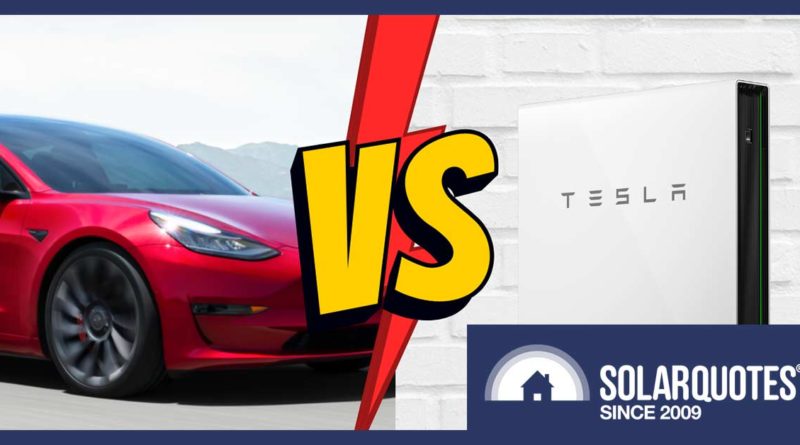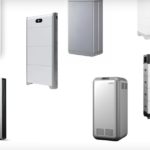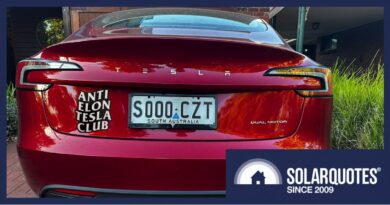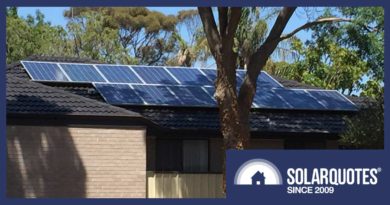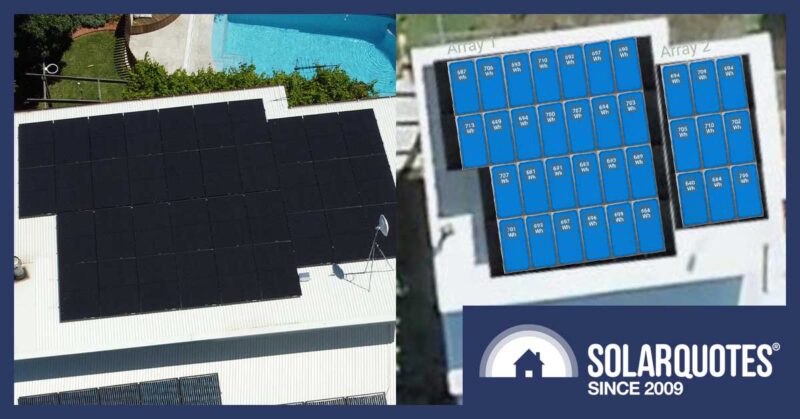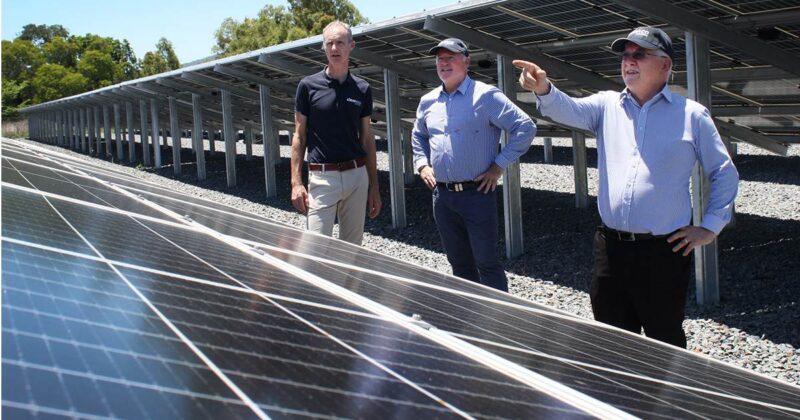Here’s Why EV Batteries Are Cheaper & More Reliable Than Home Batteries
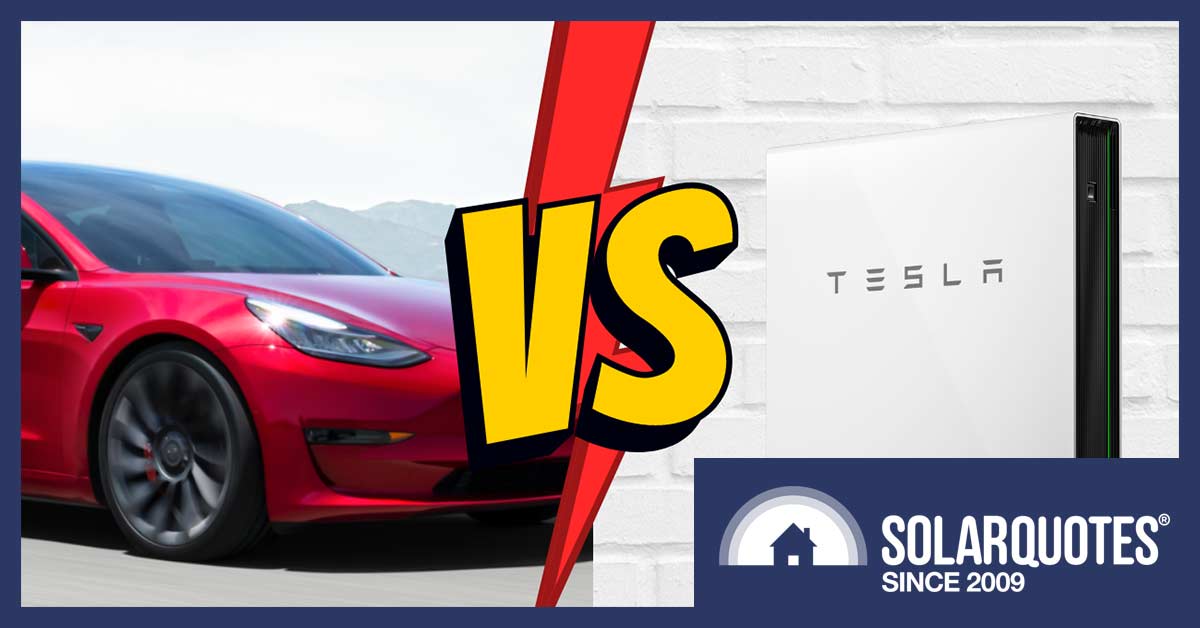
EV Battery Packs Have It Easy Compared To Home Batteries
It has been two weeks since I laid down the heavy news that out of the 26 home batteries given a whirl by the Canberra Battery Test Centre, only two worked as they should without suffering a fault or excessive capacity deterioration. This sad news has caused some people to wonder if electric car battery packs will have similar poor performance.
Fortunately, on this topic, I’m the bearer of good tidings. I’m hauling so many high-quality tidings my back hurts.
The best tiding I have is:
- EV battery packs have it easy compared to home batteries. In normal use, they’ll be fully cycled far less often. This will help them to — mostly — go the distance their warranty promises and then some.
This chart illustrates the difference (you’ll have to read on to see my working):
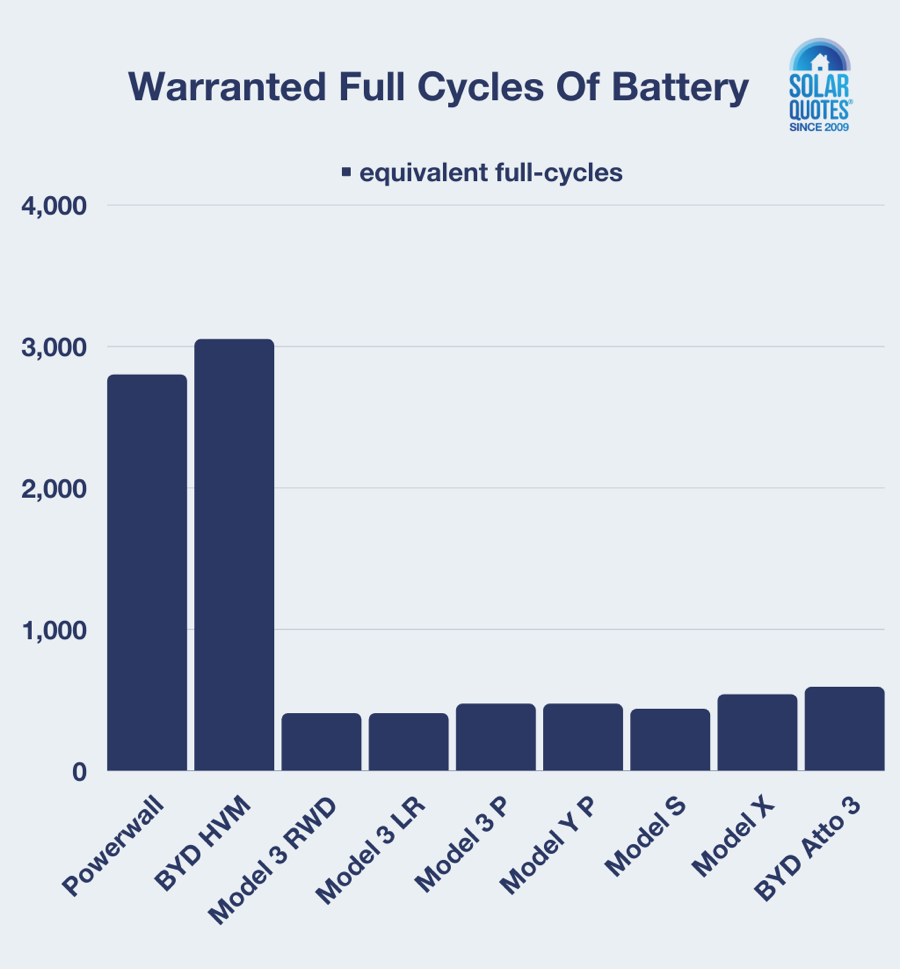
I also have another tiding that isn’t exactly good, but it does improve the odds of EV battery packs having fewer problems:
- It’s harder for companies to get away with supplying unreliable EV battery packs without ruining their reputation compared to home batteries.
I’ll explain further below, so read on if you want to learn why electric car battery packs should mostly survive well beyond the end of their warranties and provide years of additional driving. If you’d like to read the Canberra Battery Test Centre article that caused this consternation, you can do that here.
Home Batteries Work Far Harder
EV batteries aren’t expected to supply anywhere near as much energy, per kilowatt-hour of usable storage, as home batteries. Their warranties make this clear. Fortunately, some companies sell electric cars and home battery systems, making the comparison easy. Two that operate in Australia are…
- BYD — A Chinese company that named itself after this combination of letters simply because they hadn’t been taken yet, but later decided it meant “Build Your Dreams”.
- Tesla — A US company founded by Martin Eberhard and later, in his dreams, by Elon Musk.
I’ll focus mainly on Tesla. While both companies have sold many home batteries here, Tesla has sold a lot more electric cars, and I have better information on them. But I will compare the warranties of BYD’s home batteries and their Atto 3 EV, which should now be available in Australia.
Tesla Powerwall 2 Warranty
The Tesla Powerwall 2 warranty says it will last for 10 years when it’s exclusively used for home use. If put to any other additional purpose, such as being part of a Virtual Power Plant (VPP), the warranty is for 10 years or until it supplies 37,800 kilowatt-hours of stored energy. Whichever comes first. In either situation, the warranty promises it will retain at least 70% of its original capacity by its end.
When a new and fully charged Powerwall 2 is discharged of all usable energy, it can supply 13.5 kilowatt-hours. If a battery is fully charged and then fully discharged1, that is called one full cycle. I’m going to use this term to refer to the maximum amount of energy a home battery or EV battery pack can normally provide when new. Batteries slowly decline in capacity with use, but I’m not taking this into account when I talk about full cycles.
For a Powerwall 2 to supply the 37,800 kilowatt-hours its warranty allows when not used exclusively for home use, it will need to be fully cycled 2,800 times. This is far more than the number of full cycles Tesla’s EV battery pack warranties cover.
Tesla Model 3 EV Warranty
Going by sales, the most popular EV in the world2 is the Tesla Model 3 Standard Range Plus — or Model 3 Rear Wheel Drive, as it’s called now. It has a battery pack of around 60 kilowatt-hours capacity, with 57.5 kilowatt-hours of usable storage. Its warranty lasts for 8 years or 160,000 km — whichever comes first. Like the Powerwall 2 warranty, it also promises it will retain at least 70% of its original capacity.
To work out how many full cycles 160,000 km represents, we’ll need to know the average amount of energy it consumes per km. I know from fun earned experience that Tesla’s figures for range can’t be trusted3, but the EV Database says it gets around 7.75 km per kilowatt-hour in mild weather. Using this figure means the battery pack warranty only covers around 359 full cycles before it hits its km limit. That’s only 13% as many as the Powerwall 2 warranty allows.
Climate Control & Vampire Drain
There are a couple of reasons to expect actual energy use per km driven to be higher than the EV Database figure I used. These are:
- Vehicle cabin climate control, and…
- Vampire drain
Climate Control
Australians are a pretty soft bunch. If you burn down their house, they complain bitterly. If their local cafe serves them a nice bowl of broken glass and rusty nails, they ask to see the manager. For this reason, I expect electric cars here will use a considerable amount of heating in winter and a lot of air conditioning in summer.
Unfortunately, the EV Database is European and doesn’t give figures for air conditioner consumption. This is despite the fact I’d expect Europeans to be using a lot of air conditioning at the moment, considering the River Loire currently looks like this…

This is the current state of a middle stretch of the River Loire. We can’t be 100% certain it’s never dried out like this before in recorded history — but if it did, those Gauls, Romans, and Medieval monks were pretty damned unobservant. (Image from ABC News but, like, the American one.)
Vampire Drain
Vampire drain occurs when the car isn’t in use, either because it’s thinking about stuff, updating software, or simply monitoring the battery. In some situations the EV may heat or cool the battery pack in order to protect it. Various features, such as Tesla’s “Sentry Mode” security system and heating or cooling the cabin before you get in, can greatly increase vampire drain.

Here we see vampire drain sapping the proletariat of the will to resist their aristocratic masters.
As a mildly educated guess, I’d say climate control and vampire drain may add an extra 15% to average energy consumption per km driven4. This increases the number of full cycles that will occur before the warranty’s km is hit, but this adjustment only means the battery pack will be fully cycled 15% as much as the Powerwall 2 warranty allows instead of 13%.
Combined Cycle
There’s also a reason to think that electric cars will use less energy per km than the EV database figure suggests. This is because it’s for a combined driving cycle that assumes the EV will be driven 50% on highways and 50% in town. In practice, the majority of km will be done on town and city roads and — unlike internal combustion engine cars — EVs require less energy per km for urban driving than on the highway.
I’m not going to try to adjust for this for three reasons:
- I don’t have good information on the split between town and highway driving.
- If my estimate is off by 50% either way, it won’t change the fact that EV battery pack warranties cover far fewer full cycles than home battery warranties.
- I’m lazy.
Other Tesla EV Models
If I use the EV Database figure for energy consumption but bump it up 15% to account for climate control and vampire drain, then the Tesla Model 3 Rear Wheel Drive will fully cycle its battery around 422 times before its km limit is reached. This is only 15% as many full cycles as the Powerwall 2 warranty allows.
The battery pack warranties for most other Tesla vehicles allow them to be driven more km, as you can see here:
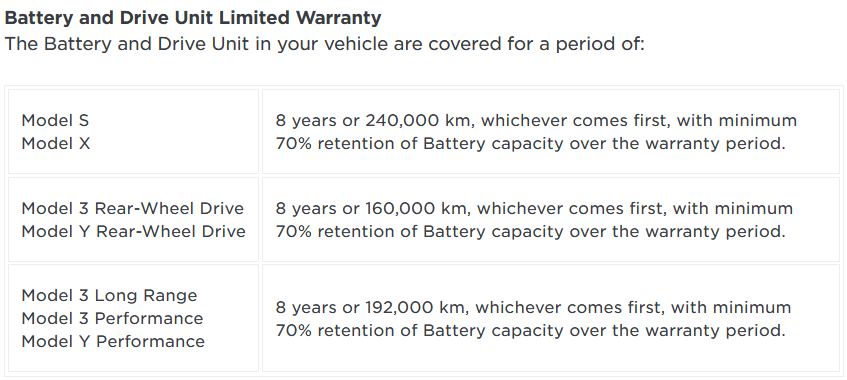
But because most other models have larger battery packs, it doesn’t make much difference to the number of full cycles their warranties allow. Below I’ve listed approximately how many times the battery packs of different Tesla electric vehicles can be fully cycled before they reach their warranty’s km limit.
I’ve used the EV Database energy consumption figures for mild weather driving and bumped them up by 15%. I’ve also given kWh figures, which are how many usable kilowatt-hours of battery storage the EV Database says these vehicles have – but note Tesla can vary the capacity of battery packs. The EV Database doesn’t have information on the Model Y Rear Wheel Drive, so it’s not included:
- Model 3 Rear Wheel Drive (57.5 kWh): 422 full cycles — 15% as many as a Powerwall 2
- Model 3 Long Range (75 kWh): 404 full cycles — 14% as many as a Powerwall 2
- Model 3 Performance (75 kWh): 470 full cycles — 17% as many as a Powerwall 2
- Model Y Performance (75 kWh): 470 full cycles — 17% as many as a Powerwall 2
- Model S (95 kWh): 434 full cycles — 16% as many as a Powerwall 2
- Model X (95 kWh): 538 full cycles — 19% as many as a Powerwall 2
Their warranties only cover from 14-19% as many full cycles as the Powerwall 2 warranty. The Model X is a full three percentage points ahead of the other Tesla vehicles thanks to having the highest energy consumption per km.
BYD Batteries
The warranty of BYD home batteries lasts for 10 years or until they supply around 3,050 kilowatt-hours of stored energy for every kilowatt-hour of usable storage capacity. A new BYD HVM home battery with 13.8 kilowatt-hours of usable storage can provide 42,690 kilowatt-hours of stored energy in total before hitting its warranty limit. This is 3,093 full cycles and 10% more than the Powerwall 2 warranty allows.
However, the BYD warranty only promises a minimum battery capacity retention of 60%, rather than Tesla’s 70%, so I consider BYD’s warranty to be worse for typical households.
While BYD hasn’t sold many electric cars in Australia, they may sell a considerable number of their new Atto 3, as the standard range version will have an on road cost of around $45,000 or less. That’s not cheap, but it is cheaper than plenty of other cars, whether EV or conventional.
The warranty for the Atto 3 battery pack is similar to the one for Tesla’s Model 3 Rear Wheel Drive, as it has…
- An 8 year time limit
- A 160,000 km limit
- A battery capacity retention minimum that’s 70% of the original capacity
But the warranty requires the vehicle to be serviced at least once per year, and this makes it worse than Tesla’s warranty.
The EV Database doesn’t have information on BYD vehicles, but — as far as I can tell — the Atto 3 appears to use around 19% more energy per km than the Tesla Model 3 Rear Wheel Drive. The battery pack of the extended range Atto 3 is similar in size to that of the Tesla vehicle and, using the same same assumptions for climate control and vampire drain, can be fully cycled around 490 times before reaching its warranty’s km limit. This is only 16% as many full cycles as the warranty of a BYD home battery allows.
The standard range Atto 3 has a 17% smaller battery pack and can be fully cycled around 590 times before reaching its warranty’s km limit. This is still only 19% as much as a BYD home battery.
Full Cycles In Actual Use
On average, Australians drive private cars around 13,000 km a year. For a Tesla Model 3 Rear Wheel Drive, this represents around 34 full cycles. That’s an average of under one full cycle every 10 days.
A Tesla Powerwall 2 home battery that’s only used for home storage and isn’t part of a VPP may be fully cycled an average 0.8 times a day by a home with well above average electricity consumption. That comes to 292 full cycles a year. This is 8.6 times more full cycles per year than the EV.
After 8 years, which is the maximum time period the EV battery pack warranty will last, the number of full cycles each will have undergone will be:
- Tesla Model 3 Rear Wheel Drive: 272 full cycles
- Tesla Powerwall 2: 2,336 full cycles (2,920 full cycles by the end of its 10 year warranty.)
That’s a huge difference in the amount of work they’re expected to do. After 8 years the EV battery pack discharges less than 12% of the full cycles of a Powerwall 2. The more a battery is fully cycled, the more likely it is to develop a problem. The relatively low number of cycles required from EV battery packs greatly improves their chances of reaching the end of their warranty without issue.
If the Model 3 Rear Wheel Drive battery pack delivered as many full cycles as the Powerwall 2 warranty covers, it could drive over one million km. That’s enough to get to the moon and back and nearly get to the moon again5.
It’s Not All Easy For EV Batteries
EV battery packs have it easy compared to home batteries in terms of the number of full cycles their warranties cover, but their lives aren’t entirely a bed of roses. Additional challenges they face include:
- High power draw
- Temperature extremes
- Vibration
- Lightweight design
Because home batteries have it far easier in these areas, optimising them for durability is easier.
High Power Draw
The biggest difference between an EV battery pack and a home battery is how much power they’re expected to provide per kilowatt-hour of energy storage capacity. (Here’s an explanation of the difference between power and energy if required.)
Ignoring minor DC to AC losses, a Powerwall 2 normally never discharges more than 5 kilowatts of power. At that rate, it would discharge 37% of a full cycle in one hour. A Model 3 Rear Wheel Drive may have to supply 208 kilowatts for brief periods. If maintained for an hour — which is impossible — it would represent 360% of a full cycle. The Model 3 Performance EV can briefly draw up to 377 kilowatts, and if maintained for an hour, that would be 500% of a full cycle.
This high power draw puts the batteries under considerable strain and is a major reason their warranties don’t cover as many cycles or years as home batteries.
When high power is used to fast charge an EV, it also puts the battery pack under strain. This is why EV manufacturers normally recommend limiting fast charging.
Temperature Extremes
High power drain heats batteries, and parking an EV in the sun can also raise its temperature. The hotter lithium batteries get, the faster they degrade. Most EVs have active cooling systems that can protect the batteries if necessary, but if the EV isn’t charging, it’s Catch-22 because energy used to cool the battery pack has to come from the battery pack. Home batteries also have to deal with high temperatures in summer, but as they’re not likely to be driven hard and then parked in the sun, the problem isn’t as extreme.
Vibrations
EV battery packs are also exposed to a lot more vibration than home batteries. It isn’t as bad as you may think because most of the vibration in conventional cars is the result of engines that run off explosions. But Australian roads are not smooth, mirror-like surfaces. Even with decent suspension, this means an EV battery pack will be exposed to far more vibration than a home battery.
Lightweight
The lighter an EV battery pack is, the better since it has to be driven around; but weight isn’t a major problem for home batteries. A lightweight battery isn’t necessarily less durable than a heavier one but, generally speaking, it’s going to be easier to design a durable battery if you don’t also have to worry about how heavy it is.
It’s Easier To Screw People Over With Bad Home Batteries
Car manufacturers have reputations based on their vehicle’s reliability. Some have better reputations than others…
…but none want their reputation to grow worse.
A car manufacturer cannot afford to sell electric vehicles with failure-prone battery packs. Ensuring they’re both safe and reliable is a major reason why large manufacturers such as Toyota have been so slow to offer EVs outside of countries with low expectations for reliability.
When a car breaks down under warranty, people are very quick to let the dealer know about it. Most people depend on a working car to get through their daily lives, and if they don’t receive a rapid response to warranty claims, they will complain about it bitterly. Reliability issues are huge headaches for car companies, and major problems that result in recalls and battery pack replacements will cost them a fortune. They have powerful incentives to get it right.
But companies selling home batteries are in a very different situation for the following reasons:
- Home batteries are a new technology, so people don’t have the same expectations for reliability as they do for vehicles.
- Home battery manufacturers may not have been around long enough to develop a reputation. This means they have less to risk by selling unreliable products.
- If a company has a reputation in other areas, they can expect poor publicity from unreliable home batteries to only have a limited effect on their other areas of business.
- When a home battery that’s used on-grid fails, it’s less of an immediate problem than a car breakdown because the household will still have power. This makes a home battery breakdown less costly to the consumer. There are a considerable number of people who have defective home batteries at this moment and don’t even realize it.
- There’s no direct competition. While it’s possible to install a generator for backup power, if you want to store solar energy for use in the evening, your only real option is to buy a home battery. (This may change as options for electric cars to supply power to homes improve.)
Because they’ve been able to get away with it, home battery manufacturers have been using customers as unpaid beta testers for products that weren’t ready for market. This approach seems to have worked for Tesla, as Powerwalls installed now are generally reliable.
But many other manufacturers have disappeared because of reliability issues — and others will potentially disappear as problems in batteries they’ve already sold come to light. Even large companies with plenty of battery experience have had major problems.
Large car companies can’t get away with providing electric vehicles with anywhere close to the low average reliability of home batteries. Not without ruining their reputation. They not only face competition from other EVs, but conventional and hybrid vehicles as well. Tesla tried launching their Model 3 EV without taking time to address quality and reliability issues and — despite their battery packs functioning acceptably — it nearly destroyed the company.
Some EV Batteries Will Fail Early
The battery packs in most electric cars sold today will operate without problem for the duration of their warranties and will continue to be problem-free for years afterwards. I expect the large majority of electric cars sold now that are on the road in 15 years will still have the same battery pack they had when their warranty ended.
But EV battery packs are still a relatively new technology and are continually being tweaked and improved. It’s inevitable some major car manufacturers will sell EVs with defective battery packs. If these are replaced without fuss under warranty, then it’s not a serious problem for owners.
A worst-case scenario is if the manufacturer has installed so many lousy battery packs they go bankrupt, causing warranty support to disappear. It’s possible to protect against this by buying electric vehicles from companies in good financial condition. EV manufacturers are currently going through a lot of effort to protect themselves from this type of disaster.
Another situation that isn’t worst case, but still bad case, is if a battery pack is just good enough to survive until shortly after its warranty is over. This would be really annoying. On the bright side, Australian Consumer Guarantees provide some protection against this, and you may be able to get a car manufacturer to provide a remedy, even if the written warranty has expired.
I’m not expecting a large number of EV battery packs to fail soon after their warranties end. This is because, to limit costs, EV manufacturers only want to be required to replace a limited number of battery packs at their expense. This means the average battery pack has be reliable enough to last well beyond the limits its warranty allows.
Some people are paranoid about planned obsolescence and companies intentionally producing battery packs that fail soon after their warranty periods are over, but this is very unlikely. If a manufacturer was caught doing this, its reputation would, or at least should, be destroyed.
They also — should — suffer severe legal consequences. Producing electric vehicles designed to fail is environmentally harmful, and legal penalties similar to — or more severe — than those for the various emission scandals makers of conventional cars have engaged in seem appropriate.
Future Improvement
At the moment, for people with typical driving habits, most EV battery pack warranties will last eight years. But I don’t see any reason why this couldn’t be 10 years or more with current battery technology. Currently, it’s usually only eight years because manufacturers know there is a risk their battery packs have defects, and they keep warranty periods short to reduce this financial risk.
Short warranty periods aren’t great for consumers, but on the bright side, it does let manufacturers charge slightly less for their electric cars than they would otherwise.
There’s good reason for future optimism. Once manufacturers become confident their batteries are reliable, warranties should improve. Current lithium battery technology is sufficient for EVs to replace conventional cars but, provided solid-state lithium batteries become affordable, we may see battery packs with million km warranties in the future. But don’t expect them any time soon. They would have to be used for a considerable time before manufacturers have the confidence to provide that kind of warranty.
TL;DR
Canberra Battery Test Centre results have shown abysmal reliability for home batteries. The situation isn’t as bad as it seems, as you can improve your chances by buying from a manufacturer with a good reputation and using a top-notch installer, but it’s definitely not good news.
While some electric vehicles will have problems, in general, EV battery packs will prove far more reliable than home batteries have been so far. The main reason is that they will be fully cycled far fewer times per year than home batteries. Also, car manufacturers have much stronger incentives to provide reliable products. They have reputations to protect and face stiff competition.
While it’s inevitable some electric cars will suffer battery pack problems, most will be dealt with under warranty, and I expect the typical EV battery pack will function for many years after its warranty ends.
Footnotes
- as per the usable energy capacity (kWh) on its data sheet
- BYD is currently selling more electric cars than Tesla, but the Model 3 appears to have been the best-selling individual EV so far.
- This does not mean other EV manufacturers’ range figures can be trusted.
- This 15% figure is for a car driven at least 20,000 km a year and hits its warranty limit of 160,000 km before hitting its 8 year time limit. If it was driven the average annual distance of around 13,000 km, I would increase it, as the portion of energy consumption lost to vampire drain would be greater.
- But this only works if there is a road, gravity doesn’t operate the way we think it does, and the amount of heating and cooling required doesn’t change in the vacuum of space.
Original Source: https://www.solarquotes.com.au/blog/ev-vs-home-batteries/

